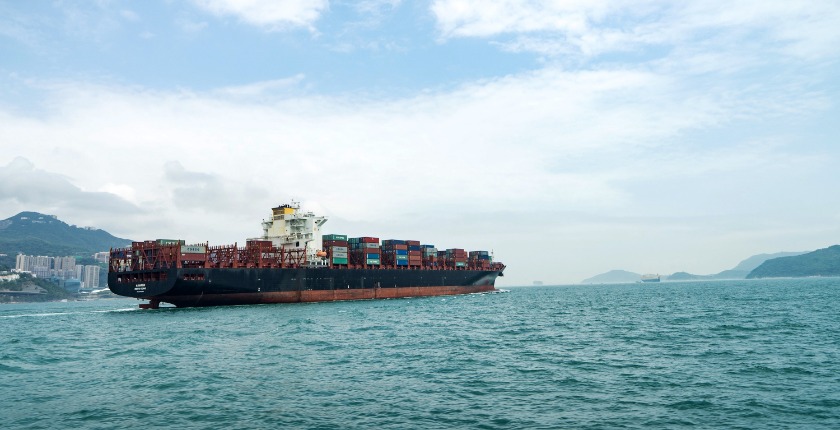Opinion - September 5, 2019
Cleaning up maritime transport


Written by Bertrand Piccard 5 min read
Three per cent. That is the contribution of the maritime sector to total global carbon emissions. It doesn’t sound all that much for a sector that ensures 90% of world trade and whose ships spend most of their time on the high-seas, out of sight and out of mind, but the predictions for climate change means that every player across every industry must pull their weight and be much more sustainable.
This is an industry that still uses “bunker fuel” - the lowest quality fuel made from the remnants of the petrol refining process and loaded with noxious gases and fine particles - to power the vast majority of ships, having an inordinate impact on the health of those people living near major ports, and contributing to the 4.2 million people who die every year from breathing unhealthy outdoor air globally.
Maritime transport is making an effort, setting in 2016 a target to reduce greenhouse gas emissions by 50% by 2050 compared with 2008 levels – but this is far from the required needs.
Put simply, it is more difficult for this industry than for others to implement strategies on how to be carbon-neutral by 2050. But this doesn’t mean there are no solutions.
Needless to say, decarbonizing an entire industry which emits as much CO2 as a country like Germany will take time. We will need to combine easy-to-implement, short-term measures with ambitious, long-term policies, as well as R&D investments. Winning this battle will require strong political will, committed businesses, and societal pressure.
A number of companies are taking steps to improve their environmental footprint, in part due to an agreement to limit sulphur content in fuels that will come into effect in 2020. This is a good step and those companies should be applauded, but keep in mind that this agreement took the 174 members of the International Maritime Organization 12 long years to negotiate - we don’t have that kind of time for the next agreement to get the sector on track.
It is heartening to see the world’s largest container shipping company, Maersk, set a zero-carbon target for mid-century, and they have already plowed over $1 billion into cutting their emissions. The truth is though, that the technologies to get them to their target do not yet exist.
Other companies are taking similar steps - installing scrubbers on their boats to reduce sulphur emissions, transforming their boats to run off liquefied natural gas (which still suffers from elevated methane emissions), while others fit sails to their ships.
The issue is that if these companies are out there on their own working toward these goals and it is damaging to their bottom-line, it would be no surprise at all if they were to abandon their ambitions. We can not afford for that to happen. We must reward those that take the first difficult and expensive steps to clean up their industry. As with any regulation, the question is where do you set the bar to make its adoption viable for the key players. Here are three places to start:
Firstly, and in the shortest time-frame possible, we must ban bunker fuel. Oil companies have long used the maritime transport industry as a sort of waste disposal system and this has to stop immediately. This measure would immediately force shipowners to turn to cleaner alternative fuels. Interestingly, oil majors who have prepared for such ban and have invested in cleaner fuels are now even supporting tougher regulations on dirty fuel (such as the IMO’s 2020 sulfur cap, forcing ships to slash the sulphur content of their ships from 3.5% to 0.5%), as this gives them a competitive edge.
Second, we must impose speed limits. The faster a ship cruises, the more fuel it needs to keep up those speeds. Furthermore, the fuel consumption increases exponentially with speed. Cutting speeds by 20% below the 2012 average would cut emissions from 24 to 34% compared to business as usual in 2030. Yes, this would slow trade a bit, but the goods transported in these ships are generally not perishable, and new smart technologies can help to make the flow of ships more predictable and reduce the time that vessels spend idling - ships wait for an average of 12 hours at the port of Buenos Aires - as they wait for their turn to dock.
Thirdly, governments must support shoreside power connection. When ships are docked, they need power to support all the port activities such as loading, heating, or lighting, and they do this through their highly polluting auxiliary engines. Shorepower can allow ships to be connected to the land-based electrical grid rather than auxiliary engines. Ports such as Vancouver and Seattle have been equipped and California has even made shore power mandatory, leading to significant reductions in their emissions. But there are still far too little investments in shoreside power, which is only available at approximately 20 ports worldwide. Many European ports, such as Southampton, which is both one of the UK's biggest ports and among its most polluted cities, have been considering shoreside power for a while, but are still reluctant, due to high infrastructure costs and lack of incentive for implementation.
Last but not least, shipowners need to embrace innovation. Through the Solar Impulse Efficient Solution Label, for clean and profitable technologies, I have come across astonishing innovations which can reduce emissions, impact and costs of the maritime sector. Auxiliary wind propulsion systems, such as Bound4blue’s rigid wingsails or Norsepower’s rotor sails are some inspiring examples.
These steps will drive the sector in the right direction, and support those willing to take risks. Support is needed from other sectors, and it’s heartening to see members of the banking sector aligning behind the Poseidon Principles in an effort to encourage lending for greener shipping. This is fundamental to the next wave of ships that are to be built and that will be with us until mid-century: they must be significantly cleaner to avoid locking ourselves into a carbon-intensive maritime future.
For years, I have been an advocate of bridging the gap between economy and ecology, that the market should be used to find solutions that protect the environment and make good business sense. But, for once, I will tell you this: when it comes to saving human lives, there is no choice to be made, and for every sector that has not yet found a realistic path to zero-carbon, stringent measures are required.
A version of this article was originally published on the New Scientist.

Written by Bertrand Piccard on September 5, 2019


